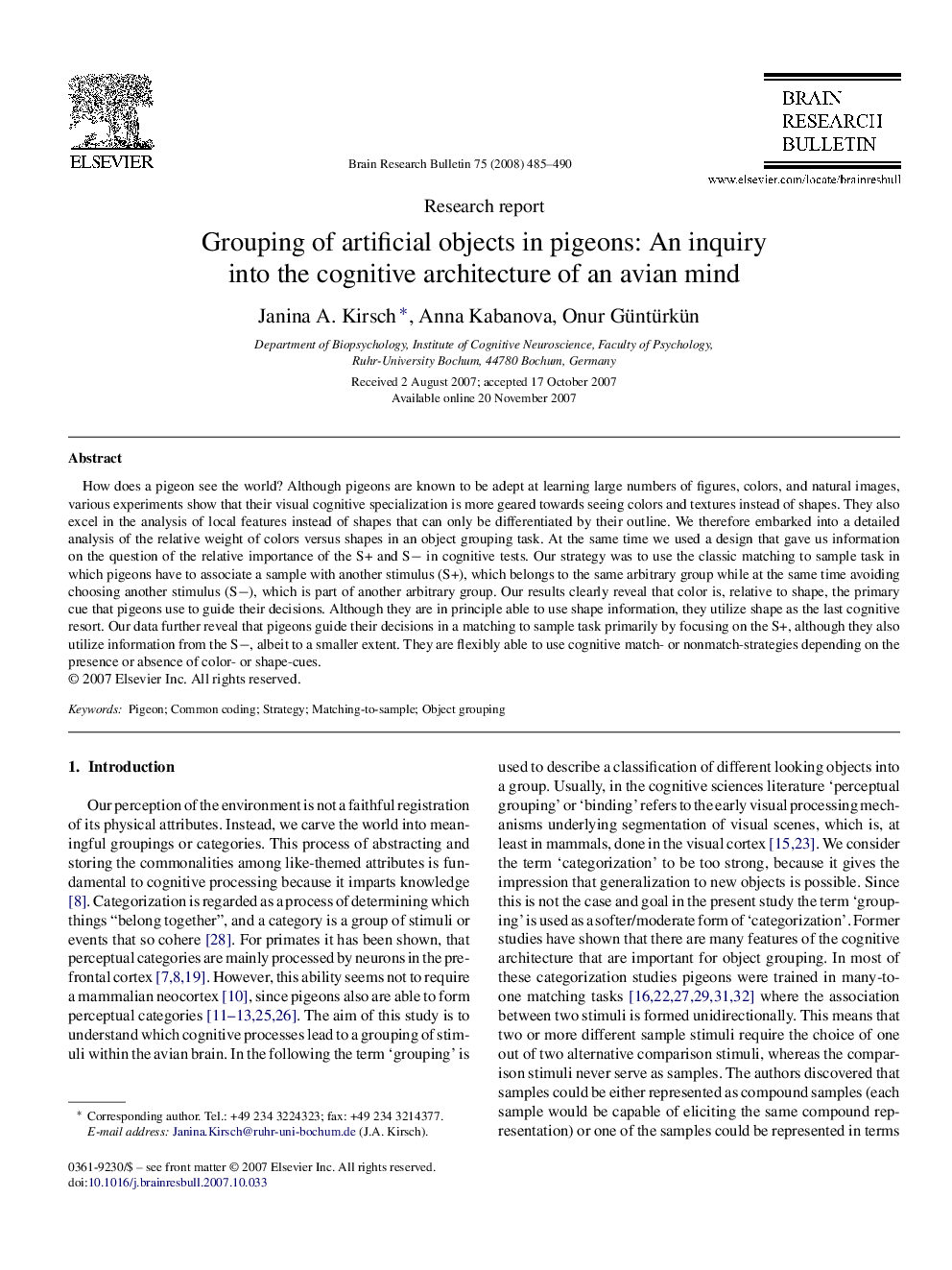| کد مقاله | کد نشریه | سال انتشار | مقاله انگلیسی | نسخه تمام متن |
|---|---|---|---|---|
| 4319713 | 1613293 | 2008 | 6 صفحه PDF | دانلود رایگان |

How does a pigeon see the world? Although pigeons are known to be adept at learning large numbers of figures, colors, and natural images, various experiments show that their visual cognitive specialization is more geared towards seeing colors and textures instead of shapes. They also excel in the analysis of local features instead of shapes that can only be differentiated by their outline. We therefore embarked into a detailed analysis of the relative weight of colors versus shapes in an object grouping task. At the same time we used a design that gave us information on the question of the relative importance of the S+ and S− in cognitive tests. Our strategy was to use the classic matching to sample task in which pigeons have to associate a sample with another stimulus (S+), which belongs to the same arbitrary group while at the same time avoiding choosing another stimulus (S−), which is part of another arbitrary group. Our results clearly reveal that color is, relative to shape, the primary cue that pigeons use to guide their decisions. Although they are in principle able to use shape information, they utilize shape as the last cognitive resort. Our data further reveal that pigeons guide their decisions in a matching to sample task primarily by focusing on the S+, although they also utilize information from the S−, albeit to a smaller extent. They are flexibly able to use cognitive match- or nonmatch-strategies depending on the presence or absence of color- or shape-cues.
Journal: Brain Research Bulletin - Volume 75, Issues 2–4, 18 March 2008, Pages 485–490